Dan Riskin's Blog, page 6
May 8, 2019
White-nosed Coati
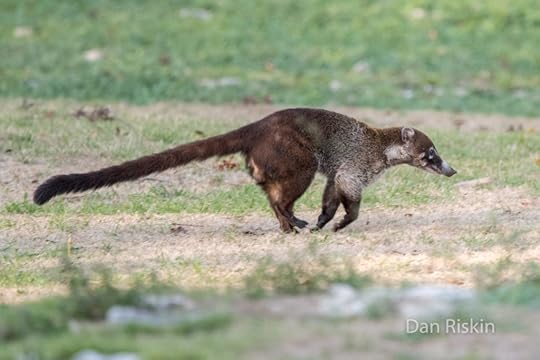
White-nosed Coati (Nasua narica)
Orangewalk District, Belize (near Lamanai) (iNaturalist entry)
1/400 sec., f 6.3, ISO 1600
For all my sneaking around to find wildlife, this guy was sauntering along in the middle of the field when we drove up to it in our van. I jumped out and snapped some shots while it ran away. Pretty good-looking mammal. It’s a procyonid – the raccoon family.
May 7, 2019
Rufous-tailed Hummingbird
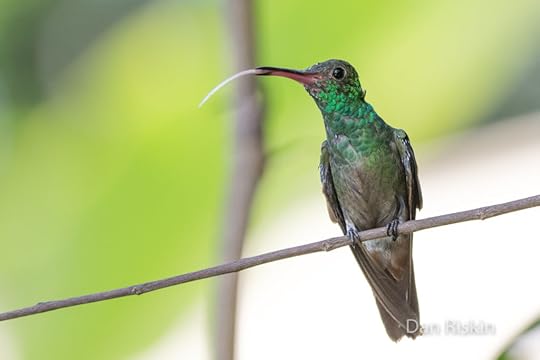
Rufous-tailed Hummingbird (Amazilia tzacatl)
Orangewalk District, Belize (near Lamanai) (iNaturalist entry)
1/1000 sec., f 5.6, ISO 1250
Black-cowled Oriole
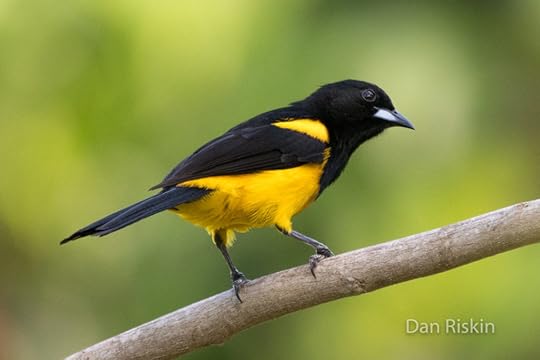
Black-cowled Oriole (Icterus prosthemelas)
Orangewalk District, Belize (near Lamanai) (iNaturalist entry)
1/1000 sec., f 6.3, ISO 1600
Ringed Kingfisher
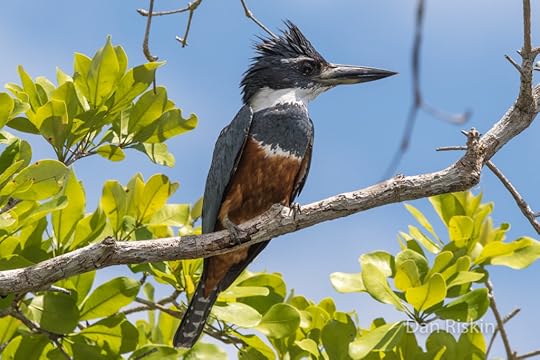
Ringed Kingfisher (Megaceryle torquata)
Orangewalk District, Belize (near Lamanai) (iNaturalist entry)
1/1250 sec., f 8.0, ISO 250
It’s been a while since I posted photos. Last month I took my son with me to Belize to see some bats, and to get some bird photos. Took this shot on the boat ride from the airport to the lodge at Lamanai.
April 12, 2018
Crested Serpent Eagle
Crested Serpent Eagle (Spilornis cheela)
Tabin Wildlife Reserve (Borneo), Malaysia (iNaturalist entry)
1/400 sec., f 6.3, ISO 2500
Another day, another predator-prey interaction in Borneo.
Poor lizard probably never saw it coming.
April 2, 2018
Blue-throated Bee-eater
Blue-throated Bee-eater (Merops viridis)
Danum Valley (Borneo), Malaysia (iNaturalist entry)
1/1000 sec., f 6.3, ISO 2500
Why are they called bee-eaters, again?
These are the perfect birds for a long lens. They zip out, grab food, bring it back to the same perch, whack the prey on the branch to immobilize it, and then pound it back. This perfectly timed shot was pure luck.
Later, I saw a bird at the same perch eating a moth. After all, who wants to be constrained by a label? These are really good-looking birds.
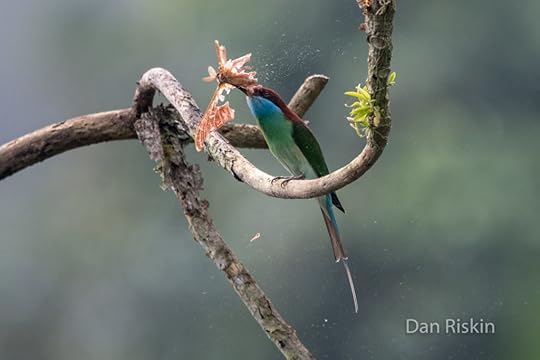
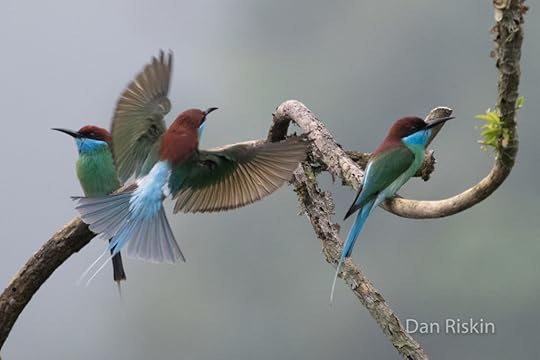
March 27, 2018
Sheath-tailed Bat
Sheath-tailed Bat (Emballonura sp.)
Tabin Wildlife Reserve (Borneo), Malaysia (iNaturalist entry)
1/250 sec., f 9.0, ISO 2500, with flash
If you ever have have the good fortune of staying at the Tabin Wildlife Resort, request “River Lodge #4,” and you’ll have a colony of these cute sky puppies above your porch.
There are two species of Emballonura in Borneo (E. monticola and E. alecto), and they have overlapping forearm lengths, so even if I had gotten one in hand (which I did not), I probably wouldn’t know who this is. Apparently, its roosting posture (thumbs not touching substrate) suggests it is E. monticola, but that seems like a dodgy character to use, so I’m playing it safe. It’s Emballonura.
March 26, 2018
Giant Millipede
Really Big Millipede (Photo by Shelby Riskin)
Danum Valley (Borneo), Malaysia (iNaturalist entry)
1/15 sec., f 5.0, ISO 200
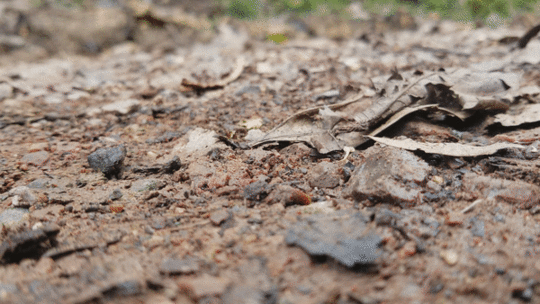
I wish I knew what species this is. So far I haven’t even been able to get down to family.
As far as I know, centipedes can hurt you, and millipedes can’t. When I picked this one up, that hypothesis was not disproven.
March 23, 2018
Sunda Frogmouth
Sunda Frogmouth (Batrachostomus cornutus)
Danum Valley (Borneo), Malaysia (iNaturalist entry)
1/15 sec., f 6.3, ISO 2500
We spotted this beauty on a night drive, while spotlighting. I snapped a bunch of shots, letting my camera pick the best shutter speed. To avoid red-eye, I was not using a flash. I’m pretty amazed that a 1/15 shutter speed didn’t blur. The pictures on either side of this one are quite blurry, so I will chalk it up to luck.
Looks like a muppet, doesn’t it?
These aren’t easy to find. It was our local guide’s first time seeing one, and if I’m not mistaken, this is the first observation of its species to be entered into the iNaturalist database!
Caprimulgiformes for the win!
March 21, 2018
Proboscis Monkey mom and baby
Proboscis Monkeys (Nasalis larvatus)
Kinabatangan River (Borneo), Malaysia
1/1000 sec., f 5.3, ISO 1400
Honestly, this was one of the species I most wanted to see on the trip, and let me tell you, proboscis monkeys do not disappoint. They’re CRAZY-looking. They’re also fairly easy to photograph, since they tend to be in the trees right along the water, but when they’re jumping around, they’re often obscured by trees.
It wasn’t until after I snapped this that I realized I she had a baby on her chest. Photography lesson: shoot first, ask questions later.
Proboscis monkeys show a really nice example of sexual dimorphism in mammals. Female and male shown below.
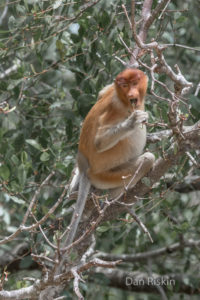
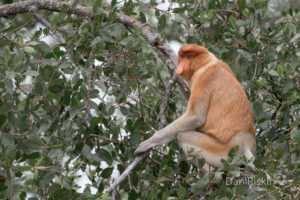
Dan Riskin's Blog
- Dan Riskin's profile
- 11 followers



